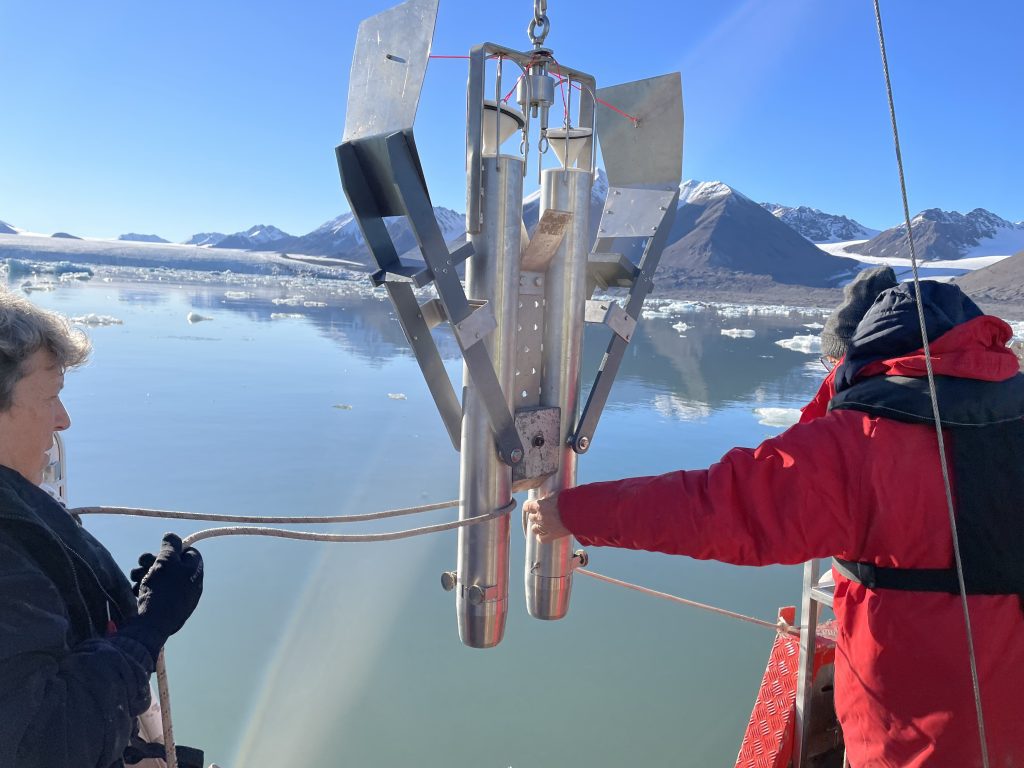New benthic habitats in Kongsfjorden?
Written by Hélène HOWA, Corentin GUILHERMIC and Maria Pia NARDELLI
Adapted by Ingrid Kjerstad/NPI
KONBHAS PROJECT – PART 2 (read about what happens to the coastline over and under sea level when glaciers melt in the KONBHAS part 1 in this link).
WHO: A team of sedimentologists, micropaleontologists, and biogeochemists from Angers University in France has been in Ny-Ålesund Reserach Station during spring and summer to follow and record the evolution of new benthic habitats on the recently deposited sediments in Kongsfjorden.
Hosted by the French-German institution AWIPEV and supported by the specialized infrastructure in Ny-Ålesund Research Station the project have been able to sample from the fjord several times this year. The team has been cold, covered in mud, but also happy with their results!



WHY: To better understand the current climate system in Arctic regions it is crucial with high-resolution marine time series covering the historical period and to develop robust biological proxies (i.e. bio-indicators) in key areas such as Kongsfjorden. In this way it is possible to to track changes in current sedimentation and marine benthic faunas, and be able to compare them with past changes. The work involves looking into sedimentation rates, changes in the characteristics of the benthic habitat and developing an indicator capable of monitoring the different intensities of sedimentary inputs over time.
HOW: The team has been monitoring the same area since 2021, i.e. 4 times in spring and late summer in Kongsfjorden. To retrieve the sediment they deploy a grab and interface corer on board Teisten to recover a sediment column (10 to 100 cm thickness) along different transects.



BACK IN FRANCE: To understand and monitor the resent changes numerous analysis are carried out at Angers Universtiy. One of the challenges with the data-analysis is to separate the system’s natural seasonal and interannual variability from the effects of climate change. PhD and Master students are in charge of the various analysis which require a great deal of energy and time!
MOST IMPORTANT FINDINGS:
i)a biozonation of the foraminiferal fauna is precisely described in the muddy sediments deposited from the tidal glacier front Kronebreen towards the outer fjord. Thus, an observed population migration would mean a displacement of the glacier front!
ii) supplies from land-terminating glacier are too coarse to support foraminiferal fauna, so this microfauna disappears when the melt is very active
THE NEXT STEP: Find money, write a new research project, and return to the Ny Ålesund research station to enrich the time series and continue this exciting research!
Read also about the The Kongsfjorden System Flagship (scientific network) in Ny-Ålesund Research Station that brings together scientists to increase cooperation and coordination:
The KONBHAS Project
KONBHAS = Kongsfjorden new benthic habitats
Part 2 – Sedimentology, Micropaleontology, and Biogeochemistry
Responsible institution:
Angers University, France
Logistical support:
IPEV (French polar institute)
Funding:
The French Ministry of Scientific Reserach and Innovation, Angers Universtiy, BEGIN project (BEnthos under Arctic melting Glacier INfluence) of CNRS INSU LEFE CYBER program
Did you find what you were looking for?